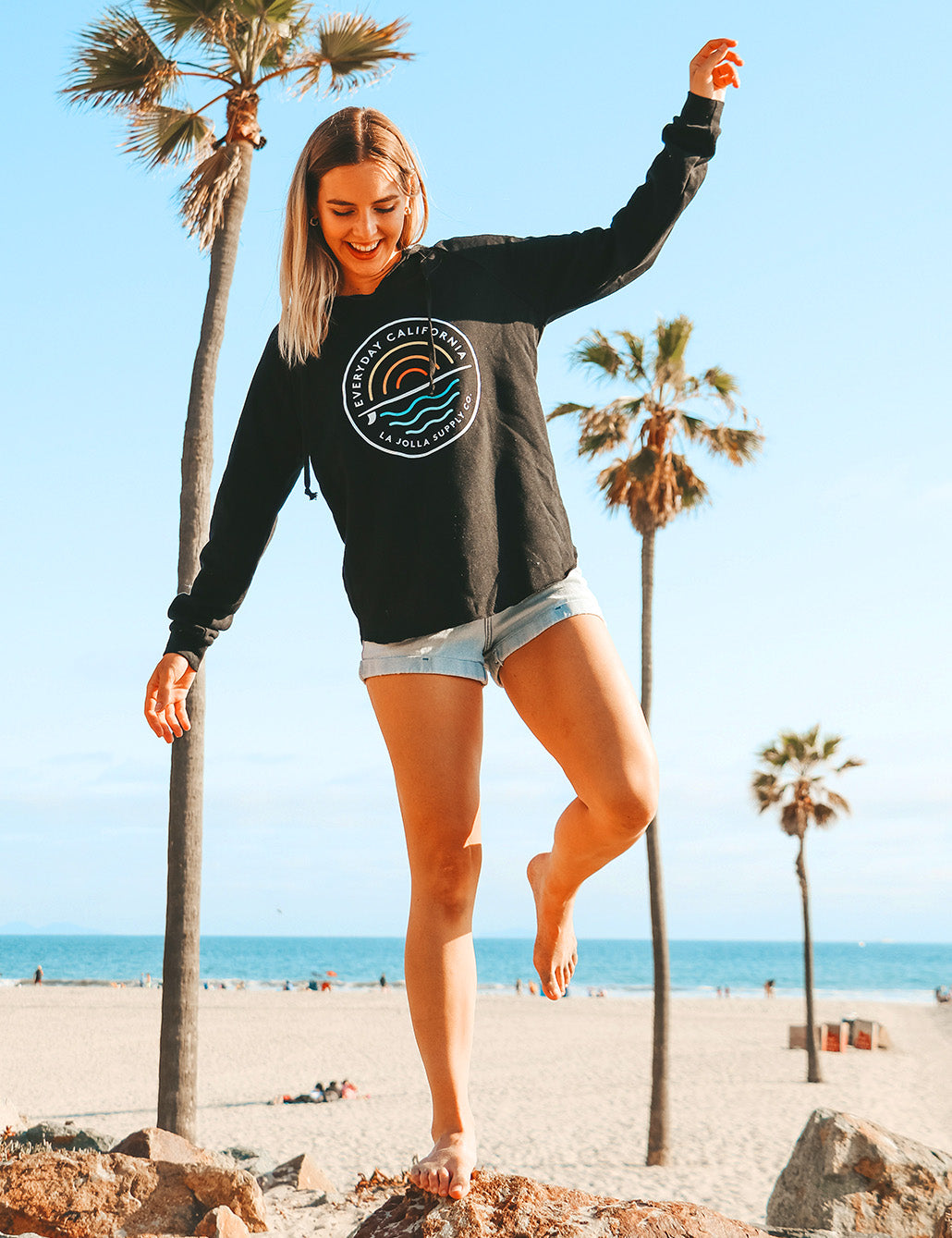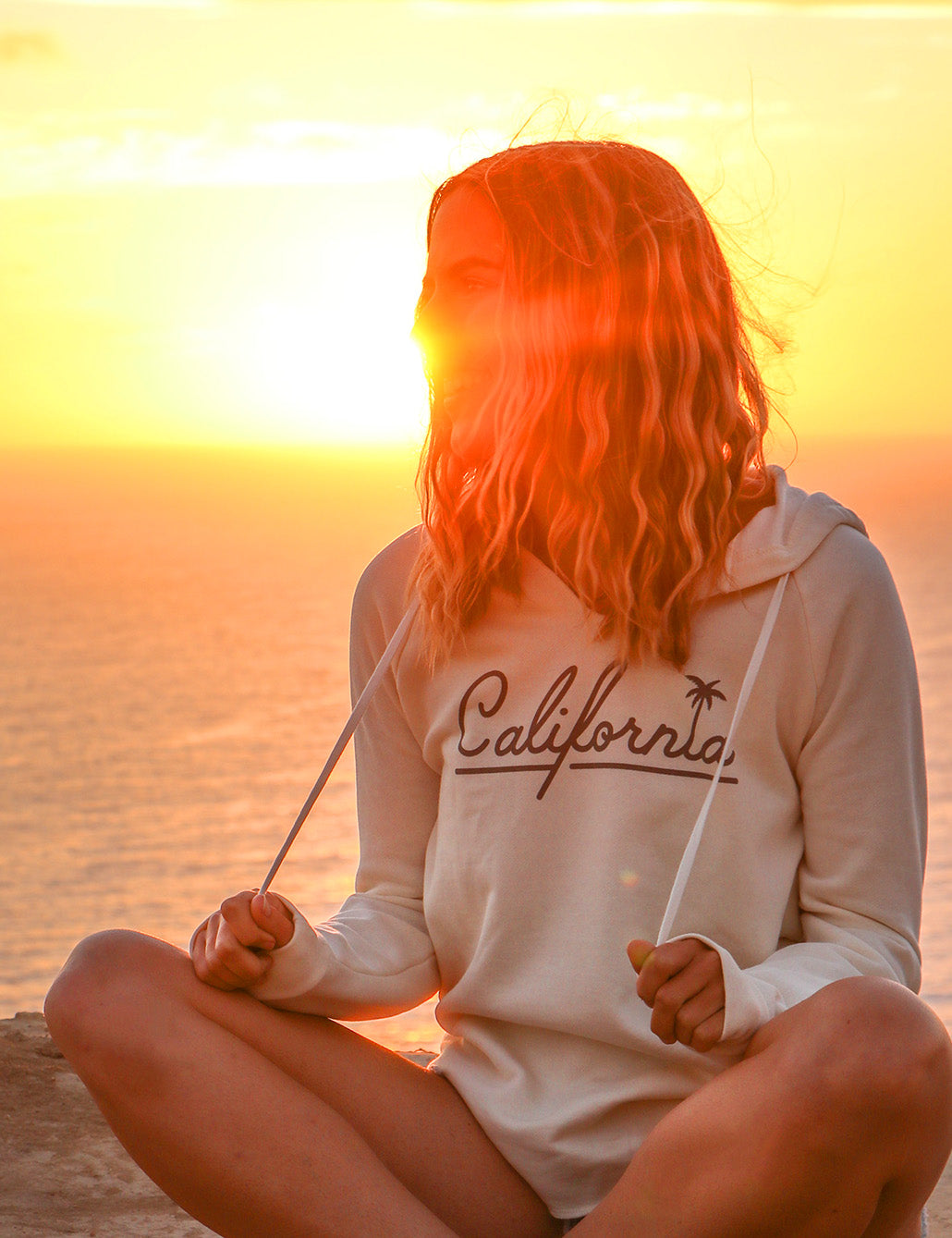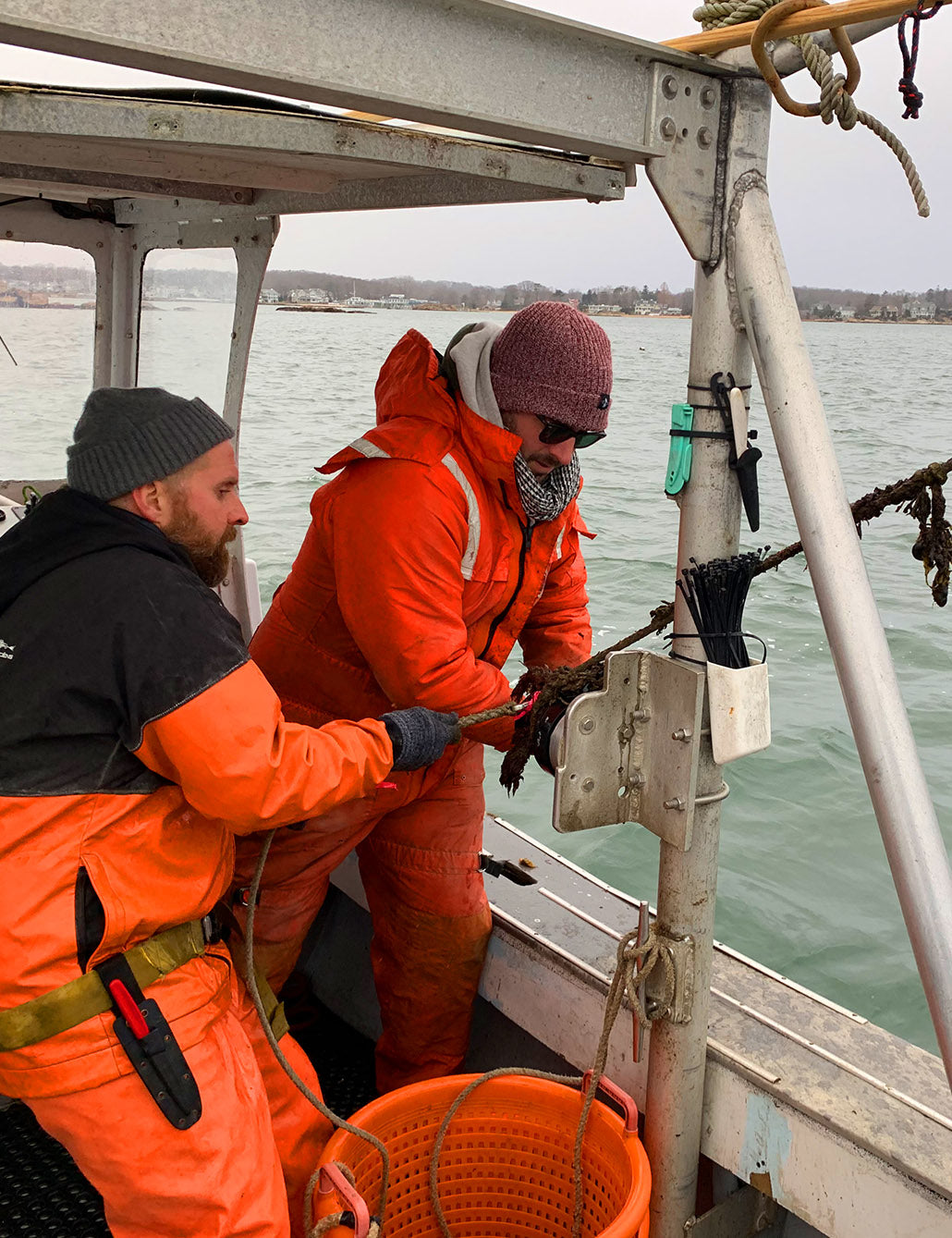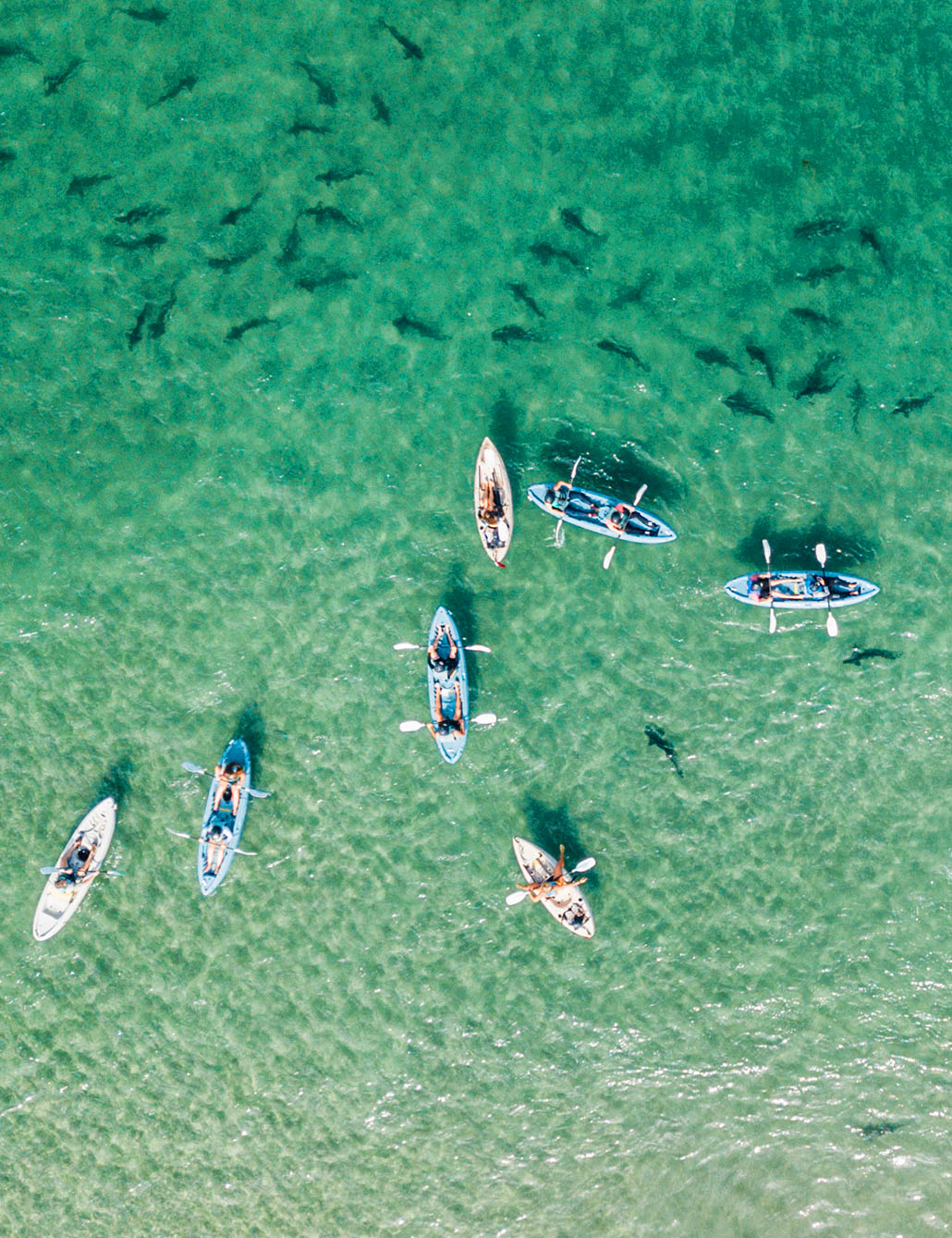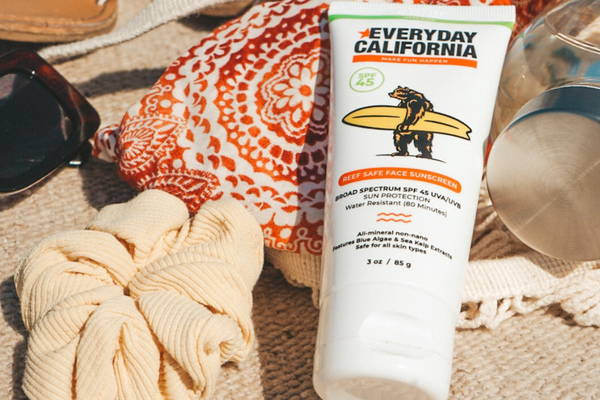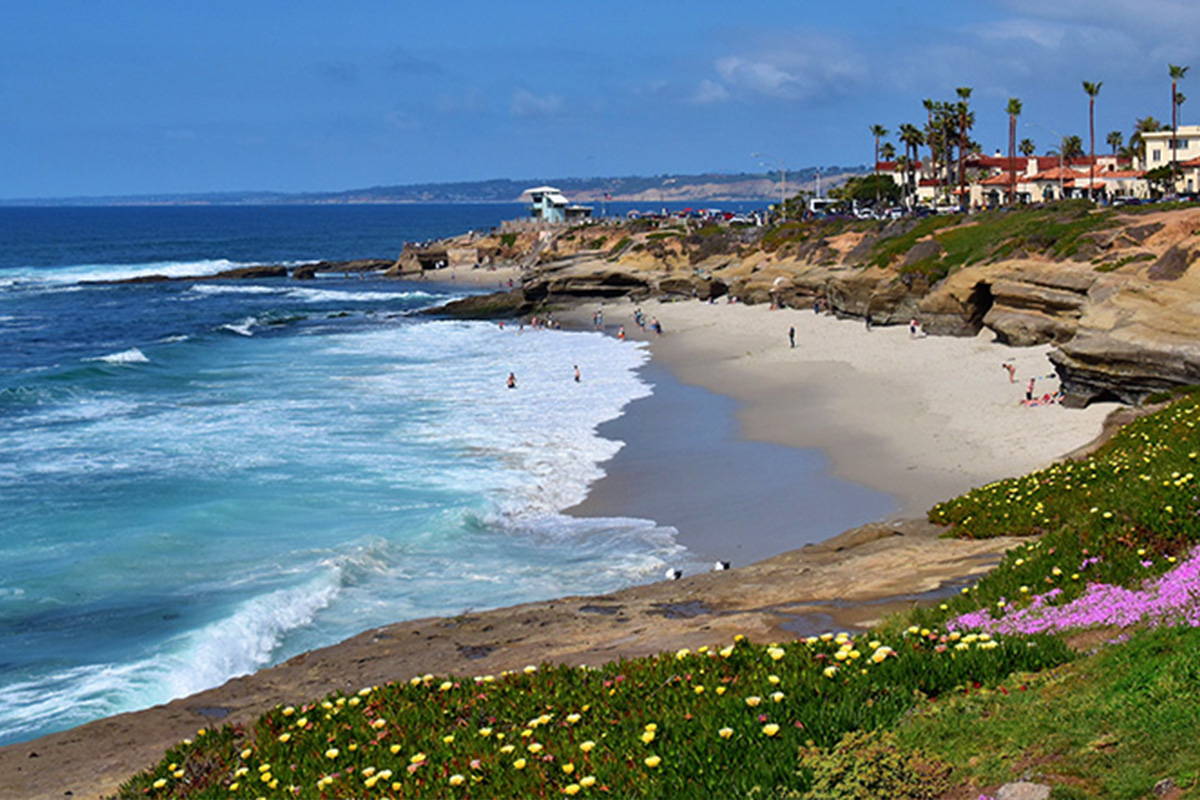It's no surprise that the greatest diving spots are also ideal for snorkeling between Santa Barbara and San Diego. The latter is also far easier than diving because there are no tanks, weights, buoyancy vests, or regulators to worry about. After all, both children and adults can just put on a mask, slip on a pair of fins, and jump in. Which is why we offer two awesome snorkeling tour options in San Diego: Kayak & Snorkel Tour and Beginner Snorkel Tour
When kicking around the surface, you'll feel the warmth from the sun. The water temperature is normally warmer during the Summer in Southern California — 60 to 75 degrees Fahrenheit — but wearing a wetsuit is still suggested so you can stay in the water longer.
You may expect to encounter kelp forests, invertebrates (corals and anemones), sponges, Garibaldi, crabs, rockfish and rays, sea lions and harbor seals, and more.
Here are the top snorkeling spots in Southern California.

5. Casino Point, Catalina Island
There are hotels, a movie theater, and an Art Deco cultural center on this vacation island. A protected snorkeling location down some stairs from the Catalina Casino provides access to colorful wildlife such as Garibaldi, leopard sharks, rockfish, and bat rays. You can also fish, go on an undersea sub excursion to explore Lovers Cove Marine Preserve, motor around the surface on a marine life safari, or scuba dive in 90 feet of water.
On its outer margins, the park's bottom contour displays rock walls and outcroppings, boulders, pinnacles, and a sandy seabed, which is genuinely indicative of Catalina Island's many qualities.
Kelp bass, Senorita fish, Sheephead, Opaleye, Blacksmith, and our state marine fish, the Garibaldi, may all be seen swimming freely in the kelp forest. The sandy bottom begins when the rocky reef stops. Divers may come across angel sharks, bat rays, banded guitarfish, and halibut. Many wrecks may also be seen in the sandy regions, which have become home to various aquatic species.
Scuba divers and snorkelers from all over the world visit Casino Point.

4. Channel Islands National Park
This park comprises five of the eight islands in this chain (Anacapa, Santa Barbara, Santa Cruz, San Miguel, and Santa Rosa) and is only accessible by boat. When snorkeling close to shore and shielded from breezes, visibility can reach 100 feet. Wetsuits are strongly advised if you plan to explore the ocean.
The park's gorgeous islands are known as the Galapagos of North America. The Channel Islands National Marine Sanctuary, which has protected a beautiful undersea habitat teeming with aquatic animals, surrounds the pristine countryside. The day might be spent diving, kayaking, or swimming. The islands are even listed as having some of the greatest camping in California by Outdoor Union.

3. Crescent Bay, Laguna Beach
Great snorkeling may be found within the kelp forests of this half-moon-shaped beach in northern Laguna Beach, located along Cliff Drive. The finest snorkeling is on the north side, out to approximately 100 feet along the shallow reef. It's still usually quite decent on the south side. An aquatic valley is in the center.
Crescent Bay is ideal for snorkeling around the granite outcroppings on either side of the coastline when the waves are calm. Additional tide pools are easily accessible at low tide along the rock shelf at the beach's southern end.

2. Crystal Cove State Park, Corona del Mar
This is one of Orange County's greatest open places with 3.2 miles of shoreline, natural seashores, and a Mediterranean climate with foggy summer mornings and bright days. It attracts snorkelers, surfers, swimmers, and divers.
Reef Point, Scotchman's Cove, Rocky Bight, and Pelican Point are the most popular diving spots. Some divers are put off by the trip down the steps and pathways from the parking areas and the rocky entrances. Divers can drop off and pick up equipment at the Historic District's entry station.
Crystal Cove is one of those places that you could spend a lifetime exploring. This long length of coastline has multiple access sites and depending on how far you want to go, you may select a different entry point for every day of the year!

1. La Jolla Cove, San Diego
The greatest is reserved until last! It's no secret that La Jolla is the crown jewel of southern California snorkeling.
The La Jolla Underwater Park and Ecological Reserve is one of Southern California's most popular snorkeling destinations, with normally warm and peaceful waters. You may observe a variety of aquatic life, including Garibaldi, dolphins, octopi, sea turtles, and even thousands of harmless leopard sharks. On the bluffs, there is free parking available daily, as well as showers and facilities.
La Jolla is located just north of the City of San Diego, however, La Jolla is still part of San Diego proper. This lovely location has magnificent beaches and some of the greatest snorkeling in Southern California, with water that is generally tranquil enough for the whole family to partake.
La Jolla Cove alone has seven distinct caves. From June to December, several leopard sharks swim in the waters of this secluded bay. These are entertaining to watch, harmless, and just a few feet long.
Underwater tombstones may also be found between 100 and 125 yards from the La Jolla Cove Beach Club. You will be able to observe these tombstones, which were erected in commemoration of the spear-fishermen who perished in this sea in the past.
Are you looking for a way to enjoy the ocean while also looking for marine life? Come snorkel with us at Southern California's best Underwater Park! If you want to join a group, we provide excursions for beginning snorkelers and a hybrid Kayak & Snorkel trip that will take you deeper into the reserve.
Everyday California trips are appropriate for practically everyone aged five and up. All snorkel trips need a starting level of swimming ability. Any trip includes the rental of a mask, snorkel, and fins for each passenger to use while in the water.

California Snorkeling Conditions
Though the weather near the coast is beautiful most of the year, this does not mean snorkeling in California is perfect anytime. The Pacific Ocean has some frigid seas; therefore, wearing a wetsuit can be beneficial virtually all year, but let's look at the weather conditions by region.
The water temperature in Southern California during the summer will be warmer, ranging from 65 to 75 degrees (21-24 C). During the winter, temperatures dip to 60 degrees/15 degrees Celsius (and sometimes below). Expect the waves to be harsher in the winter, which will affect the purity of the water.
Northern California is somewhat colder. Come snorkel during the peak summer months to enjoy the experience pleasantly, but don't forget to bring your wetsuit.
Snorkeling Skills to Remember

Improve your Swimming
If your swimming abilities are lacking, enroll in swimming classes at your local pool. Even if you're a good swimmer, improving your skills can only help you in the water.
Concentrate on the freestyle in particular, as the kicking technique out of that style will be used when snorkeling.
Improving your strength and endurance in the muscles used by the kick will allow you to snorkel more frequently and with less effort, freeing you up to appreciate the surroundings.
While a snorkeling vest provides buoyancy, it also restricts your movement in the water and can make diving to see a reef or fish more difficult, if not restrict it altogether.
Strong swimming abilities will help you stay safe in the water.

Improve your Breath Hold
Many snorkelers just stay on the surface and breathe via the snorkel while looking below.
However, some more proficient snorkelers venture into the diving zone by diving beneath the surface while holding their breath.
You'll be able to get a closer look at the marine fauna and examine reefs and other underwater features up close.
You may improve your swimming efficiency and breath-holding ability to make the most of your time underwater.
Conserving Energy while Snorkeling
Going for a leisurely dip in tropical seas may not appear to be strenuous exercise, but make no mistake: snorkeling will drain you! Because water has a higher heat capacity than air, your body loses heat continually, even in very warm water.
It also takes some energy to move ahead when wearing fins.
Add to that that snorkeling expeditions can last all day, with hours spent in the water, and you can understand why thinking about reducing your energy expenditure is beneficial!
Slow down, relax, and let your fins do the job for you, just like scuba diving.
Many inexperienced snorkelers make the mistake of attempting to swim along with their arms like they would in a pool. However, our legs surpass our arms many times over, especially when we wear fins. So keeping our arms relaxed at our sides and focusing on our fins is an excellent approach to conserving energy.
And don't kick too hard; even a slow kicking rate can propel you forward, and moving too rapidly will cause you to miss out on attractive views.
Furthermore, kicking too hard and waving your arms causes a lot of splashing, which scares away the very animals you're come to watch!

Conserving your Air while Snorkeling
Remember to take deep, slow breaths. Breathing via a snorkel is not the same as breathing without one.
Taking deep breaths is essential for getting the most out of it. Deep breathing also helps to keep your heart rate low, which allows you to relax and preserve energy.

Snorkeling Deep
Many snorkelers are quite content to stay at the surface during their dive, and they should be.
Others feel compelled to conduct brief breath-hold dives to get closer to reefs, marine critters, or other deep-water objects. There are a few things you can do to make the most of every single breath:
First and foremost, unwind.
Take a few seconds on the surface to move as little as possible and calm your breathing.
Take a few deep, calm breaths after that.
When you're ready to descend, bend your waist 90 degrees so your torso is immersed and vertical in the water, and elevate your legs, so they're also vertical but above water.
The weight of your legs will propel you into the depths, saving you energy. Use your fins to increase depth when they hit the water.
This is far more efficient than the swimming ascent that many unskilled snorkelers try.

Once you are Underwater, Relax
Most people may increase their breath holding by just slowing down and relaxing. Swim gently and effectively, trying to streamline your body and focusing on driving yourself ahead with every movement.
Err on the conservative side. Come up well before you run out of air, and gradually increase your bottom duration with each dive. Soon, you'll gain a sense of how long you can remain down safely, and it'll most likely be far longer than your initial excursion beneath the surface.
With our Everyday California crew, you'll feel comfortable and safe, all while exploring the awesome scenery La Jolla has to offer.


